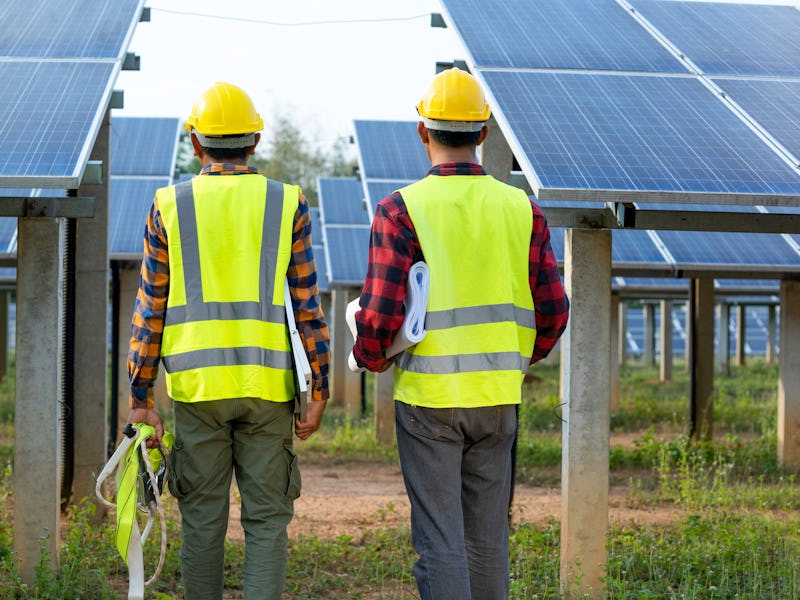How humanity can fight Covid and climate change together
The coronavirus pandemic has brought humans' impact on their world into sharp focus.

The ongoing Covid-19 pandemic has radically altered life on Earth.
From the elections to the daily commute, aspects of life once taken as givens have indelibly shifted as the pandemic continues. To combat this invisible threat, governments and agencies across the globe have poured money and other resources into relief efforts, scientific research, and medical treatments.
This unprecedented effort also offers lessons in to what humans could achieve if they came together to fight another, perhaps graver, threat — one that jeopardizes not only our own species' survival but the very future of our planet.
We're talking about climate change.
Covid and climate — A recent paper published in the journal Science argues that if even a modest proportion of all that has been spent on Covid-19 relief was put towards fighting climate change, it could make a serious impact on the goals set in 2015 through the Paris Accords.
“Though challenging politically, our findings show that these solutions are well within budget,” the authors say in a press statement accompanying the research.
The finding runs contrary to one of the most pernicious arguments against large-scale efforts to combat climate change — the dollar cost. Estimates vary, but one figure proposed by proponents of the “Green New Deal," a Democratic-backed rethink on climate change solutions in the United States, puts a price tag of $73 trillion on a global transition to wind, solar, and hydroelectric energy.
If implemented in 143 nations around the world, it could lead to over 30 million jobs, supporters say. Yet $73 trillion is a price tag many aren't willing to stomach. But to understand the scope of the researchers' argument, it is important to look at the true costs of the pandemic and how these intersect with the fight against climate change.
Follow the money — In the paper, research analyst Marina Andrijevic and her colleagues at the think-tank Climate Analytics totaled the Covid-19 stimulus money distributed by over 100 countries so far — some $12 trillion.
Most of this money goes towards health costs and supporting individuals through unprecedented economic change. That’s “understandable,” the team says, and they have no wish to change that. Rather, they say that this effort needs to be extended beyond the immediate effects of the pandemic.
By ear-marking just over 10 percent of that money towards safeguarding against future crises — some $1.4 trillion — it would be enough to cover the low-carbon energy investment that needs to occur to meet the goals of the Paris Climate accords.
The conclusion syncs with what we've heard from other global agencies. In March, United Nations secretary-general António Guterres described coronavirus as the greatest challenge the organization has faced since its inception. But he also said that once the crisis is over, “we can go back to the world as it was before or deal decisively with those issues that make us all unnecessarily vulnerable to crises."
A graphic comparing Covid-19 relief and green investment around the globe.
By ear-marking just over 10 percent of that money towards safeguarding against future crises — some $1.4 trillion — it would be enough to cover the low-carbon energy investment that needs to occur to meet the goals of the Paris Climate accords.
Pushing back against climate change can coincide with helping people whose lives have shifted through the Covid pandemic, the say.
“The dual crises of COVID-19 and climate change are global problems requiring bold government action, international cooperation, and sustainable and inclusive solutions," Andrijevic said in a statement accompanying the research.
Solar panel installation would be one job that could be paid for under the proposal.
Building wind turbines could be another.
Ultimately, the researchers' proposal would not facilitate an altered world geared towards green living. But incorporating climate change into calculations of Covid-19 relief and recovery costs could help safeguard our species against not only future pandemics, but other environmental threats to create a more resilient world.
Abstract: Governments around the globe are responding to the coronavirus disease 2019 (COVID-19)–related economic crisis with unprecedented economic recovery packages (1), which at the time of writing surpassed USD 12 trillion. Several influential voices, including the United Nations (UN) secretary-general, heads of state, companies, investors, and central banks, have called for post–COVID-19 economic recovery efforts to be used to catalyze the necessary longer-term transformation toward a more sustainable and resilient society. Here we shine a light on the opportunity for these investments to support a green recovery by inventorying and classifying the latest information on governments' fiscal stimulus plans (1) and comparing the size of these measures to estimates of low-carbon energy investment needs compatible with the 2015 UN Paris Agreement. We show that low-carbon investments to put the world on an ambitious track toward net zero carbon dioxide emissions by mid-century are dwarfed by currently announced COVID-19 stimulus funds. But marked differences across countries and regions at differing stages of development emphasize the role that international support and global partnership must play to create conditions that enable a global climate-positive recovery.